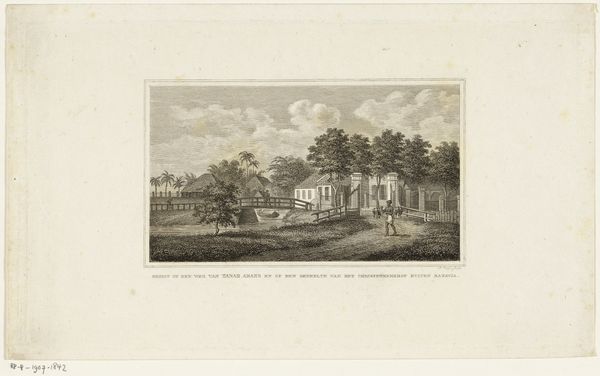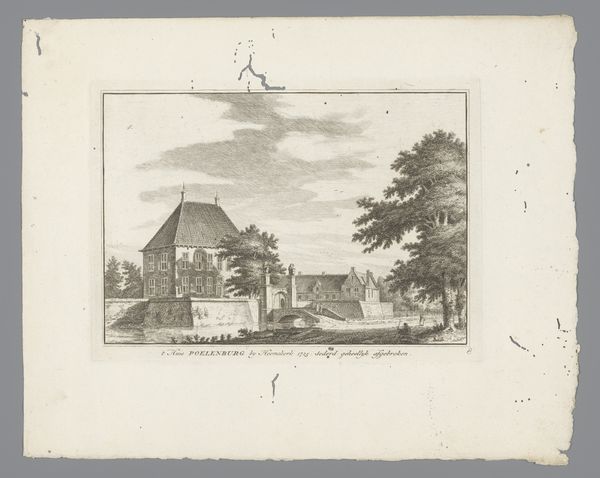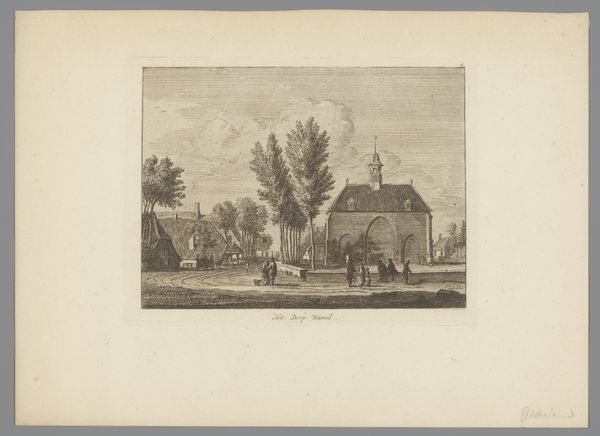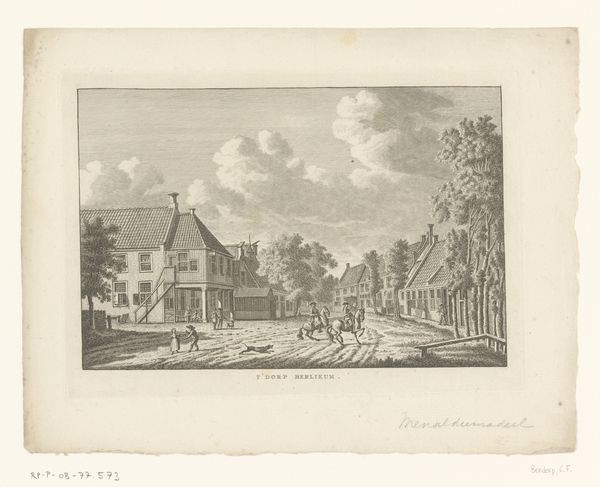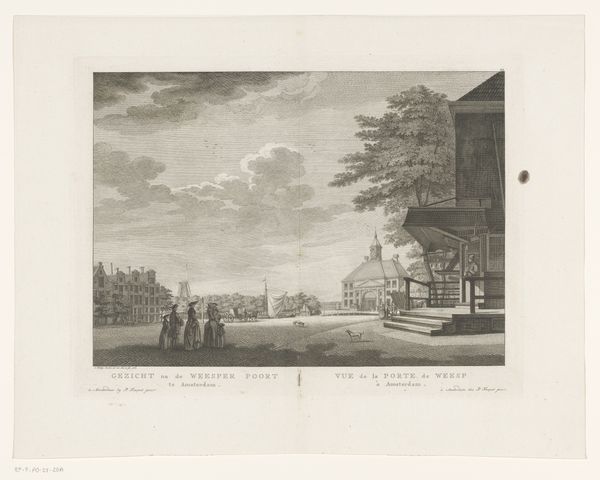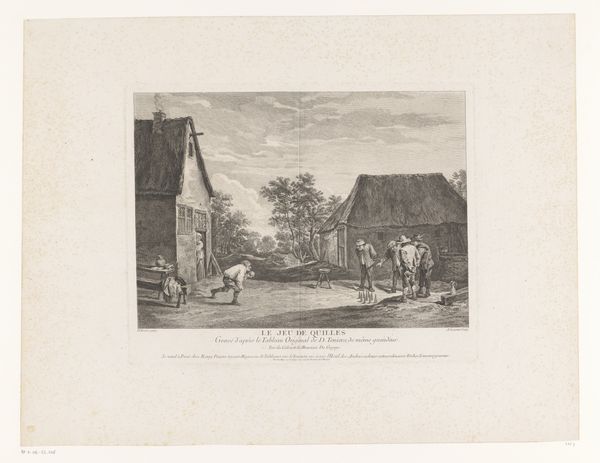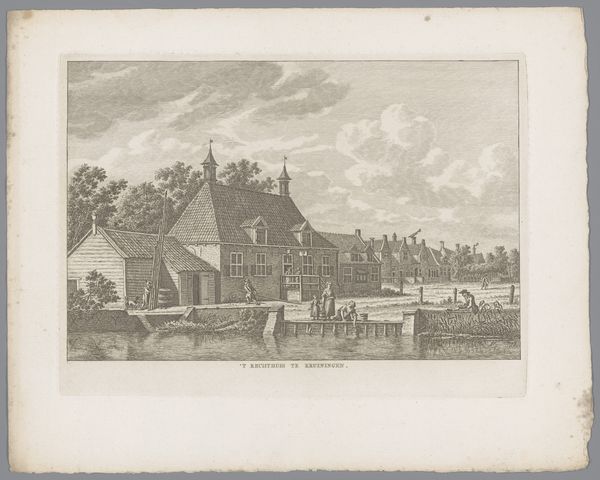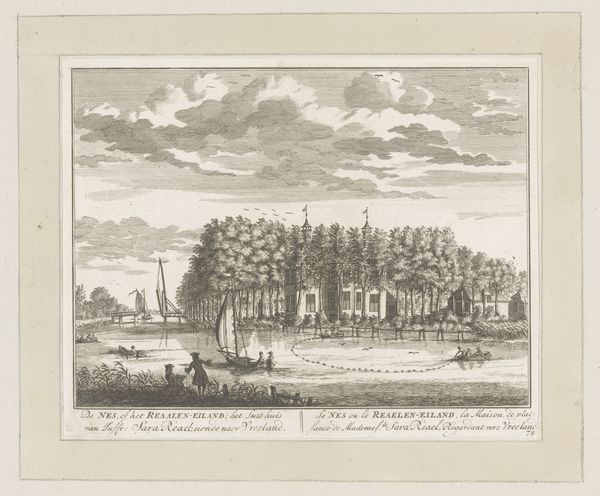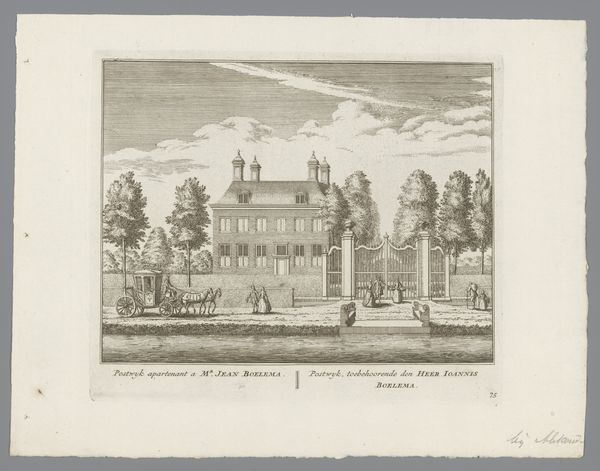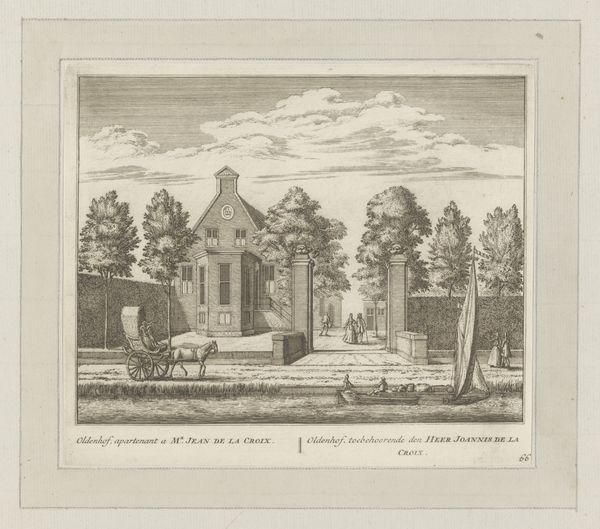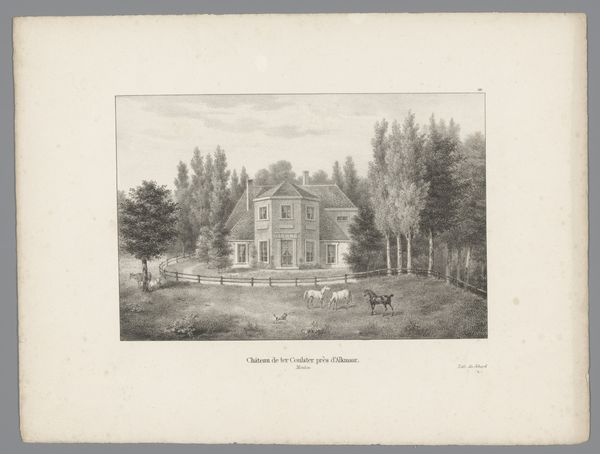
drawing, print, paper, ink, engraving, architecture
#
drawing
#
dutch-golden-age
# print
#
landscape
#
paper
#
ink
#
cityscape
#
engraving
#
architecture
Dimensions: height 172 mm, width 205 mm
Copyright: Rijks Museum: Open Domain
This print, *Weg tussen Honselaarsdijk en Wateringen*, was created by Carel Allard, likely around the turn of the 18th century. It's made using etching, a printmaking technique dependent on acid to bite lines into a metal plate, which is then inked and pressed onto paper. Consider the labor involved, not only by Allard, but also the mill workers and other commoners represented in the scene. This bustling landscape of waterways and buildings encapsulates the intersection of Dutch commerce and society during the Golden Age. Etching allowed for relatively quick reproduction, making images accessible to a broader audience. The acid-biting process renders fine details and textures, from the ripples on the water to the foliage. This print reflects a society increasingly defined by trade, technology, and the division of labor, subtly questioning the traditional hierarchies between labor and fine art, asking us to look closely at the hands that built this world.
Comments
No comments
Be the first to comment and join the conversation on the ultimate creative platform.

